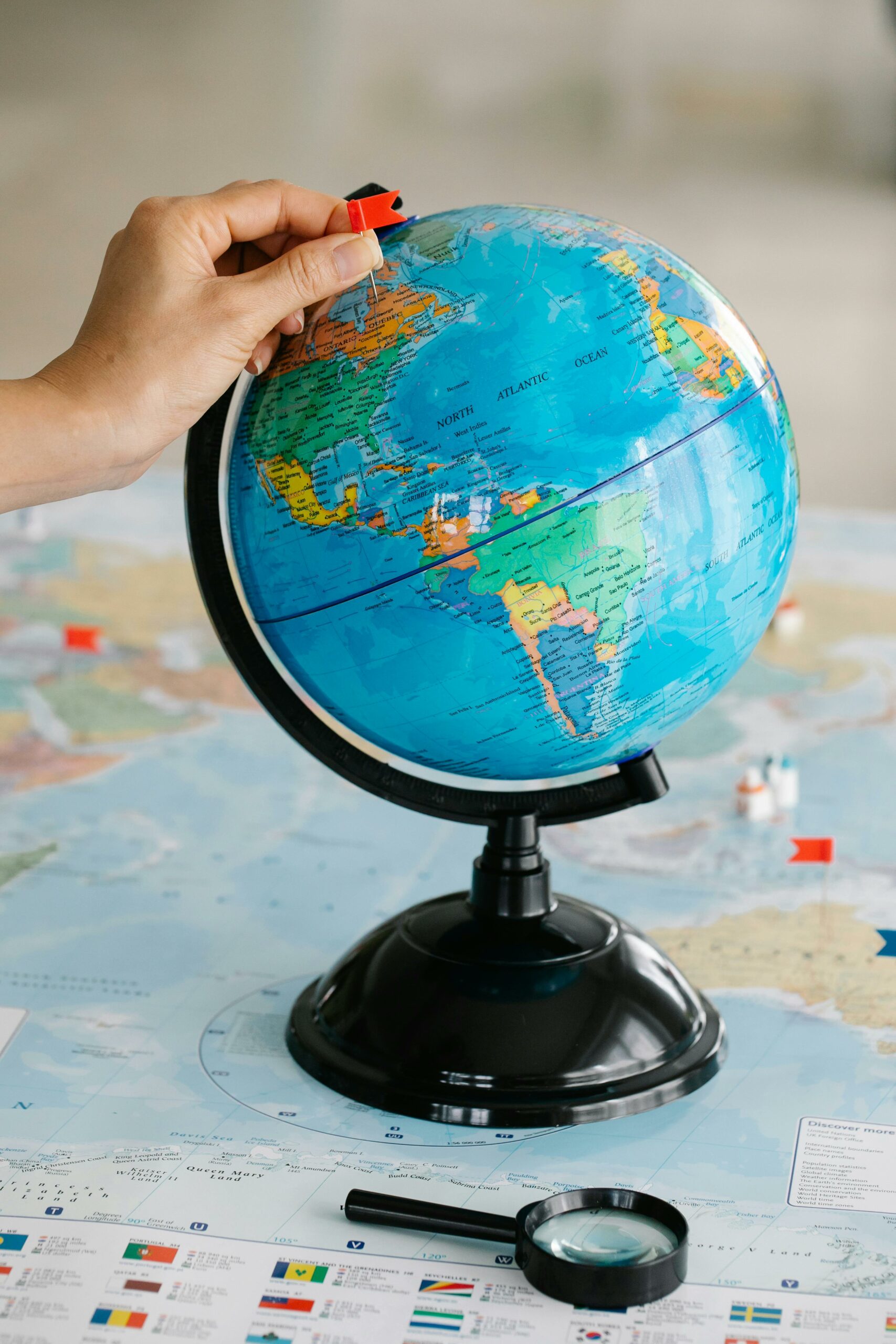Understanding the world population by race is essential for grasping the complex tapestry of human diversity. Have you ever wondered how different races are represented globally? This intriguing topic opens a window into not just demographics, but the socio-economic factors that drive population trends. A pie chart illustrating the racial composition of the world can provide striking insights into this fascinating subject. It’s curious to note that the global population is continually evolving, with shifts in migration patterns and birth rates impacting the racial distribution. Do you know which race forms the largest segment of the world’s population? Or how cultures and communities blend and evolve over time? Exploring these questions can lead to a deeper appreciation of our shared humanity. With the rise of globalization and cultural exchange, understanding these dynamics is more relevant than ever. In this post, we will delve into the racial demographics of our planet, examine the latest statistics, and uncover the stories that lie behind the numbers. So, let’s embark on this enlightening journey to visualize the racial diversity of our world through compelling data and engaging visuals!
Unveiling the Numbers: What the Latest World Population by Race Pie Chart Reveals About Global Diversity in 2023
So, let’s dive into the fascinating world of the world population by race pie chart. You know, it’s one of those things that kinda makes you think—like, why do we even care about which people belong where? Not really sure why this matters, but here we are, folks. It’s a big ol’ topic that can get a bit complicated, but I’ll do my best to break it down. Or at least, I’ll try.
First off, let’s get this straight: the world is home to a whopping 7.9 billion people, or maybe it’s 8 billion now? Who keepin’ track? Anyway, the world population by race pie chart helps us visualize the racial and ethnic diversity across the globe. I mean, if you’re like me, you probably think pie is best served on a plate, not in a chart. But hey, whatever floats your boat, right?
Now, here’s a little breakdown of some key stats that might make your head spin. It’s like trying to eat spaghetti with a spoon—possible, but not ideal. Here’s how the population stacks up:
| Race/Ethnicity | Percentage of World Population |
|---|---|
| Asian | 60% |
| White | 16% |
| African | 14% |
| Latino/Hispanic | 9% |
| Other | 1% |
So, there you have it! If you squint at the world population by race pie chart, you can see that the Asians dominate this chart like they’re at an all-you-can-eat buffet. But like, what does that even mean? Maybe it means there’s a ton of diversity just waiting to be explored. Or maybe it’s just me, but I feel like people overthink this stuff way too much.
Let’s talk about the Asian population for a sec. With 60% of the world’s people, it’s like they’re the cool kids at school, and everyone else is just trying to hang on. This includes countries like China, India, and Indonesia. You know, places that have more people than most of us can even imagine.
Then, there’s the White population, which makes up about 16%. This includes folks from Europe, the Americas, and parts of Oceania. It’s like the pizza in the chart is a bit less cheesy, but still has its fans. Now, if we’re being honest, there’s some debate about what counts as “white.” Like, do you include all European descents? Or just the ones with the fancy last names? Who knows!
Moving on, the African population is around 14%. This group is totally diverse, with over 3,000 distinct ethnic groups. Seriously, I wouldn’t even try to name them all. It’s like playing a game of darts in the dark—good luck hitting the target. They’re rich in culture, languages, and traditions, which is super cool, but also a bit overwhelming.
And let’s not forget about the Latino/Hispanic group, which makes up 9%. This group is super vibrant, with roots in various countries across Latin America and Spain. They bring the fiesta to any gathering, but it’s not really a monolith. There’s so much variety that it’s like trying to choose a favorite dessert—impossible!
And last but certainly not least, we got the “Other” category, which is just 1%. It’s basically like that one friend who never shows up to the party but gets included in the group chat anyway. This category can include Indigenous peoples from various regions, mixed races, and various smaller groups. Not that they’re any less important, but you get the point, right?
Now, let’s get into some practical insights. If you’re planning to use the world population by race pie chart for any reason—maybe for a school project or just to impress your friends at the bar—here’s what you can do:
Create Your Own Pie Chart: Use tools like Google Sheets or Excel. It’s super easy to input the data and voila! You got yourself a pie chart.
Discuss the Implications: Talk about what this data might mean for global policies or social issues. Are there areas where certain races are overrepresented? Underrepresented?
Explore Cultural Contributions: Each race or ethnicity has its own unique contributions to society, and it’s worth exploring them. Like, did you know that the bamboo used in sustainable products comes from Asia?
So, while I might not have answered all your burning questions about the world population by race pie chart, I hope I at least gave you a little food for thought. Or maybe just a slice of pie. Whatever works for you.
How Diversity Shapes Our World: Insights from the Race Breakdown in the Global Population Pie Chart
When we look at the world population by race pie chart, it’s like staring into a colorful kaleidoscope of humanity. You got all these different shades, and it kinda makes you wonder what it’s all about, right? Not really sure why this matters, but it does, and it’s kinda interesting if you think about it. So, let’s dive into the nitty-gritty of those pie slices, shall we?
First off, let’s just say, according to estimates, the world population is over 7.9 billion (yeah, billion with a ‘b’). And if you break it down by race, well, you get a fancy pie chart that shows how many people belong to each racial group. I mean, who knew that numbers could be this colorful? It’s like a sweet dessert, but, you know, with people instead of sugar.
In this pie chart, you’d see a big ol’ slice dedicated to Asian folks, which makes sense since Asia is home to a whopping majority of the world’s population. I mean, have you ever been to China or India? You can practically feel the crowd, right? If we wanna get specific, around 60% of the world’s population is from Asia. That’s a whole lotta people!
Then there’s the African slice, which is also pretty ginormous, accounting for about 17% of the world population by race pie chart. Now, here’s where it gets a little tricky, because, you know, Africa isn’t just one thing. It’s a whole bunch of countries, cultures, and peoples all rolled into one. So, when we say African, it’s like, which African are we talking about? There are over 3,000 distinct ethnic groups in Africa. Yes, three thousand! Mind blown, right?
Now, moving on to Europe, which makes up about 10% of that big ol’ pie chart. If you ask me, Europe seems to be shrinking in terms of population share. Maybe people are just moving around more? Or maybe they just like vacationing instead of having kids. Who knows? It’s like they’re all on some extended holiday from parenthood. And honestly, who can blame them?
Next, we got the Americas, which is like the cherry on top of this demographic dessert. The combined population of North and South America is roughly 13%. But again, let’s not get too comfy here! The racial breakdown isn’t as simple. You got a mix of Native Americans, Europeans, Africans, and Asians, all contributing to this melting pot. It’s like a cultural stew, simmering away with all those delicious flavors.
Now, let’s throw in some numbers for a clearer picture. Here’s a quick breakdown of the world population by race pie chart — and remember, these are just rough estimates:
| Racial Group | Percentage of World Population |
|---|---|
| Asians | 60% |
| Africans | 17% |
| Europeans | 10% |
| Americas | 13% |
So, what does this mean? Does it mean anything at all? Maybe it’s just me, but I feel like these numbers are trying to tell us something. Like, hey, we’re all in this together, right? Or maybe it’s just a reminder that we’re all different and that’s okay. Either way, it’s a good conversation starter at parties, if you’re into that sort of thing.
Oh, and let’s not forget about the indigenous peoples of the world. They often get left out of these charts, but they’re a vital part of the story. They represent a small fraction of the global population, but their cultures and histories are rich and diverse. It’s like they’re the hidden treasures of the population pie, just waiting to be discovered.
And speaking of hidden treasures, have you ever thought about how these numbers can change over time? Population dynamics are like a rollercoaster ride, full of ups and downs. Factors like migration, birth rates, and even climate change can all mess with these percentages. It’s like trying to catch smoke with your bare hands — you think you got it, but it slips right through.
So, as we look at this world population by race pie chart, maybe we should take a moment to appreciate the variety and complexity of human life. It’s not just numbers on a graph; it’s real people with stories, dreams, and lives. And who knows, maybe the next time you look at a pie chart, you’ll think of it as more than just data. It’s a slice of humanity in all its colorful glory.
In the end, numbers are numbers, but they don’t tell the whole picture. So, while pie charts are fun and all, let’s not forget that behind every slice,
The Surprising Truth Behind Global Demographics: Exploring the Race Distribution in Today’s World Population
Alright, let’s dive into this topic of world population by race pie chart. Not really sure why this matters, but hey, it’s kinda interesting, I guess? So, the world population is around 8 billion, and it’s not like everyone has a clear idea of how many people belong to each race. Just a big ol’ melting pot of cultures, right? But if you take a peek at the world population by race pie chart, it’s like a colorful map of humanity – well, sorta.
Now, let’s break it down a bit. The world population by race pie chart has some major players in the game. You got your Asians, who make up about 60% of the world. Whoa, that’s a huge slice of the pie! But then again, there’s a lot of folks in countries like China and India. I mean, it’s like trying to fit a whole elephant in a tiny car. Not really sure how that works out, but you get the point.
Next up, there’s Europeans. They make up around 10% of the world’s population. This group includes all sorts of backgrounds, from the Nordic types to Southern Europeans. I sometimes wonder if they all hang out together and share recipes or something. But seriously, it’s diverse! Now, the world population by race pie chart also shows that Africans are about 17%. That’s a significant portion too! So many cultures and languages, you could spend a lifetime trying to learn about them all.
Here’s a little breakdown for you all, just cause I think it helps visualize things.
| Race | Approximate Percentage |
|---|---|
| Asian | 60% |
| European | 10% |
| African | 17% |
| Latin American | 8% |
| Others | 5% |
Wow, look at that! It’s like a school project, but with more color and less glue. Speaking of glue, that’s how diverse this world is. The world population by race pie chart is a reminder that we’re all kinda different, but also the same. It’s mind-boggling when you think about it.
Let’s not forget about Latin Americans, who are around 8%. They got a rich history, and it’s not just about tacos and fiestas (although, let’s be real, those are pretty cool too). Some might say the diversity here is like a fiesta of cultures. I mean, how many other places can you find tango, salsa, and reggaeton all in one spot? Maybe it’s just me, but I feel like dancing now.
And what about the “others”? Yeah, I’m talking about the 5% that doesn’t fit into the big categories. It’s kinda like that last slice of pizza, you know? No one wants to throw it away, but not everyone’s super keen to eat it. This could include Indigenous peoples, Middle Easterners, and maybe even some people from places we’ve never even heard of.
Now, if you’re thinking, “What’s the big deal about this pie chart anyway?” Well, I guess it helps us understand where we all come from. It’s like a family reunion, but instead of awkward small talk, you get to see the big picture of humanity. Or maybe it’s just a way for sociologists to get their kicks. Who knows, right?
Here’s a little list of why knowing about the world population by race pie chart could be important:
- Cultural Understanding: Helps us appreciate different traditions and histories.
- Policy Making: Governments might need this info for healthcare, education, and more.
- Social Dynamics: Understanding race can help with social issues, maybe.
- Travel Planning: If you know where folks are from, it may change your travel plans, right?
- Global Issues: Helps tackle issues like racism, migration, and equality.
So yeah, the world population by race pie chart isn’t just a fancy graphic for presentations. It’s a tool, a visual that can help us navigate the sometimes murky waters of human interactions. I mean, if we can’t talk about our differences, how are we ever gonna connect?
It’s kinda funny how we’re all trying to figure out who we are in this big ol’ world. Sometimes I think we’re just like a bunch of lost sheep wandering around, looking for our own flock. But hey, at least we got this world population by race pie chart to guide us. Or maybe it just confuses us more. Either way, it’s all good, right?
Top 5 Races Driving Global Population Growth: Key Insights from the Latest Pie Chart Analysis
World Population by Race Pie Chart: A Colorful Look at Diversity
So, have you ever look at a world population by race pie chart? It’s kinda like a colorful slice of life, right? I mean, it’s not really sure why this matters, but people seem to love pie charts. They’re everywhere! Anyway, let’s dive into the nitty-gritty of what these charts actually show us about human diversity.
First off, the world population is around 8 billion, give or take a few million here or there. Now, if we take a gander at the world population by race pie chart, it’s clear that there are some major players in this game. Here’s a rough breakdown:
- Asian: Approximately 60% of the world’s population, which is like, wow, that’s a lot!
- African: About 17% of the total, and lemme tell ya, that’s not a small slice of the pie.
- European: Roughly 10%, which is kinda surprising if you think about it.
- Latin American: Around 8%, also a pretty decent chunk.
- North American: Only about 5%, but hey, it’s a big continent with a small population.
Okay, so I know what you’re thinking. “What about the other races?” Well, let’s not forget about the Indigenous peoples and other mixed race categories that can be tough to pin down. They exist, but they often get lumped into the bigger pie slices, which is annoying, right?
If you were to see that world population by race pie chart, it would probably look like a giant pizza with everyone fighting over the biggest slice. And not to burst anyone’s bubble, but the numbers can be a bit sketchy. I mean, who really knows how many people are in each category? It’s like trying to count grains of sand on a beach. You can guess, but you’ll never know for sure.
Now, speaking of confusion, let’s throw in some fun facts! Did you know that the Asian population is not just one homogenous group? It’s a melting pot of cultures, languages, and histories. From the bustling streets of Tokyo to the vibrant markets of Mumbai — each place has its own flavor, kinda like a buffet!
Here’s a simple table to make things clearer:
| Race | Percentage of World Population |
|---|---|
| Asian | 60% |
| African | 17% |
| European | 10% |
| Latin American | 8% |
| North American | 5% |
| Others | ??? |
Now, we don’t have the exact number for “Others,” cause frankly, it’s a bit of a hot mess. But, it’s important to recognize that these numbers can shift over time. I mean, isn’t it wild to think how migration, birth rates, and other factors can change these pie slices?
Let’s be real for a second. When you look at the world population by race pie chart, it’s hard not to feel a bit overwhelmed. It’s like staring at a jigsaw puzzle with a few pieces missing. You wanna see the whole picture, but those gaps can be frustrating. Maybe it’s just me, but I feel like a lot of this data is just a way to categorize people into neat little boxes.
And here’s a fun little thought — what if we all just stopped worrying about the numbers and focused on our shared humanity? I mean, it’s a nice thought, but good luck getting folks to agree on that!
Now, let’s talk about some practical insights that can be drawn from this whole population race thing. For instance, understanding these demographics can really help in things like policy-making, education, and healthcare. Like, if a country knows it has a younger population, they might invest more in schools. Or if they’re getting older, healthcare becomes a priority, y’know?
And if you’re trying to break down the world population by race pie chart for your own purposes, consider using some online tools. There’s tons of websites that let you create your own charts. It’s kinda fun, but also slightly stressful because the data can be all over the place. You might end up with a pie chart that looks more like abstract art than anything else.
In summary, while the world population by race pie chart offers a snapshot of humanity, it’s essential to remember that behind every percentage is a story — stories that are often complex and intertwined. So next time you glance at one of these charts, maybe take a second to think about what those numbers really mean. Or don’t. Whatever floats your boat!
Why Understanding Racial Composition Matters: A Deep Dive into the World Population by Race Statistics
Let’s dive into the fascinating world of world population by race pie chart. It’s a real eye-opener, or at least, that’s what they say. I mean, who wouldn’t want to know how many folks are out there, right? Not really sure why this matters, but here we are.
So, first things first, you got to understand that the world’s population is not just one flavor. Oh no, it’s like a gigantic ice cream sundae with lots of toppings. The world population by race pie chart gives us a visual breakdown of different racial and ethnic groups. Here’s a fun fact: there are over 7 billion people strutting their stuff on this planet, and they come in all sorts of shades and backgrounds.
Here’s a table, just to break it down a bit, you know?
| Race/Ethnicity | Percentage of World Population |
|---|---|
| Asian | 60% |
| European | 15% |
| African | 14% |
| Latin American | 8% |
| Other | 3% |
Now, isn’t that something? I mean, 60% of the world’s population identifies as Asian. That’s like a huge chunk of the pie, right? But wait, hold your horses! There’s more. Maybe it’s just me, but I feel like we often forget about the nuances within these categories. Like, do all Asians really identify as the same? Or what about the different countries? You got your Chinese, Indian, Japanese, and all sorts of others. It’s a wild mix!
Next up, we got the Europeans, hangin’ at about 15%. That seems kinda low, don’t you think? I mean, they’ve been around for a while, and they’ve got history. But according to this world population by race pie chart, they’re just a slice of the global pie. It’s interesting to think how this might change over the years. Maybe more people will start moving around, blending cultures, and suddenly we got a new pie recipe brewing.
And then there’s Africa, making up about 14% of the population. It’s not just one big ol’ country over there, ya know? There’s tons of countries with their own cultures and languages. So, saying “African” is like saying “European” — way too broad, if you ask me. But, who am I to judge? Maybe it’s all about simplicity.
Let’s not forget about Latin America, which is about 8%. That’s a whole lot of salsa and spicy food in one category! And again, there’s diversity, like you wouldn’t believe. From Brazil to Argentina, each country’s got its own vibe. But the world population by race pie chart lumps them all together, which might be a bit unfair.
Now, you might be thinking: “What’s with the other 3%?” Well, that’s like the cherry on top, the folks who don’t fit neatly into these categories. It could be mixed-race individuals or people from small indigenous groups that just don’t have the numbers. It’s like the hidden treasure of the pie chart.
Here’s a little list of some things to ponder when you look at this world population by race pie chart:
Cultural Nuances: Every race and ethnicity has its own rich history and culture. It’s not just numbers; it’s people with stories.
Migration Patterns: People move! They migrate for jobs, education, and even love. This changes the demographics constantly.
Future Projections: What will this chart look like in 20 years? Will Asia still be the top dog? Or will Africa’s population boom change the game?
Identity: How do people identify themselves? Is it race, nationality, or something else entirely?
Globalization: The world is getting smaller. People mix and mingle, and suddenly categories might not mean what they used to.
Let’s not kid ourselves, the world population by race pie chart might seem like just another boring statistic. But it’s actually a reflection of humanity as a whole. It’s about understanding the different backgrounds, cultures, and stories that make up our planet. Maybe it’s just me, but I feel like it’s pretty crucial to look beyond the numbers and see the people behind them.
So next time you see a world population by race pie chart, take a moment. Think about the lives behind those percentages. Who knows? You might just find a deeper connection to the world, which is kinda cool, if you think about it.
Conclusion
In conclusion, the world population by race pie chart offers a compelling snapshot of humanity’s diversity, highlighting the various ethnic groups that contribute to our global society. As we explored, the data reveals significant disparities in population sizes among different races, with notable implications for cultural representation, resource allocation, and social dynamics. Understanding these demographic trends is crucial not only for policymakers and researchers but also for individuals seeking to foster greater inclusivity and cultural awareness. As we move forward in an increasingly interconnected world, it is essential to celebrate our diversity while also addressing the challenges that arise from racial disparities. Let us commit to promoting equity and understanding across all racial lines, recognizing that our differences can enrich society rather than divide it. By educating ourselves and engaging in meaningful conversations, we can create a more harmonious world that values every individual, regardless of their race.












